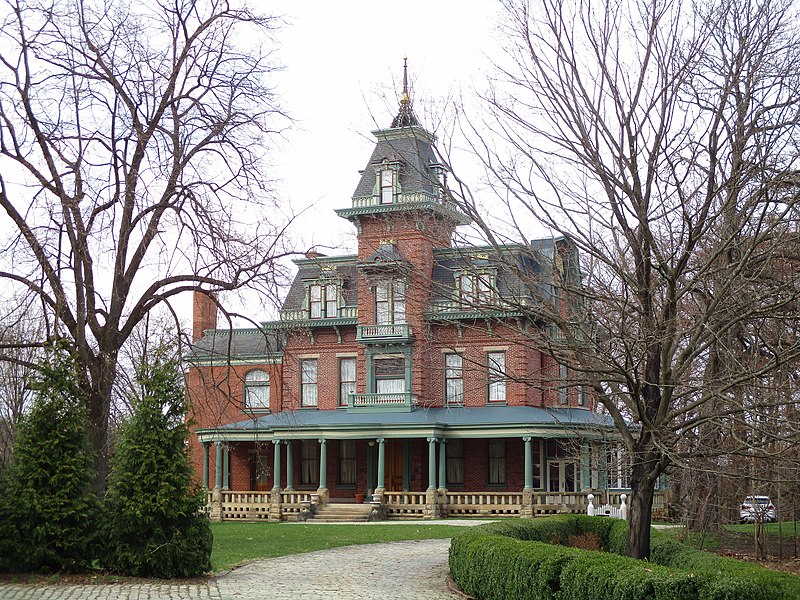
A modest but distinguished row of Second Empire houses on 22nd Street. Note the patterns in the roof tiles.

Perhaps the grandest Second Empire mansion in Pittsburgh, Baywood was built in 1880 for Alexander King. The house is listed for about three million dollars, and thanks to the real-estate agents you can “experience Baywood” virtually. According to the site, the house sits on “an unprecedented 1.8 acre lot,” and readers are invited to speculate on what the word “unprecedented” means in that context.


This Second Empire mansion had a narrow escape: the third floor burned out in 1987, and the owner died the next year, leaving the house a derelict hulk. It was rescued from demolition at the last minute by serial restorationist Joedda Sampson, who painted it in her trademark polychrome style; it has since passed to other owners, whose pristine white also works well with the design. The house was built in 1871; Frederick Osterling worked on early-twentieth-century renovations and additions.




The Second Empire style, with its dormered mansard roofs, was very popular in Pittsburgh—so much so that we walk by most examples without noticing them. Here’s a quite ordinary building in the back streets of the South Side, but it rewards a closer look at some of the details. Above, one of the lintels over the windows, which all have simple but effective carved decorations.

This roof has so far kept its original shingles, decoratively varied with four rows of a different shape across the middle.

One of the windows on the ground floor. Notice that its lintel decoration is different from the one above.

These star bolts are decorative, too—but they’re not mere decorations. Star bolts like these, which you see in old houses all over the city, are the decorative ends of long bolts that literally hold the building together. They are often installed to stabilize a wall that has begun to sag.

The Second Empire style is named after the Second French Empire of Napoleon III. Its most obvious characteristic is the mansard roof with dormers, which supposedly arose in France because, in buildings that were taxed by their interior space, attics were not taxed, and the space under the roof counted as an attic no matter how accommodating it was. The building here at the corner of Carson and 18th Streets is a splendid example of the Pittsburgh implementation of the style.

Some say that Carson Street on the South Side is the best-preserved Victorian commercial street in the United States. Pittsburghers know it more for its bars and nightclubs, but the whole street is a feast of every kind of Victorian style. Here, a corner location gave some proud shopkeeper a chance to indulge in a bit of Second Empire flourish.